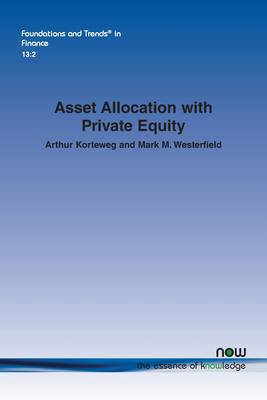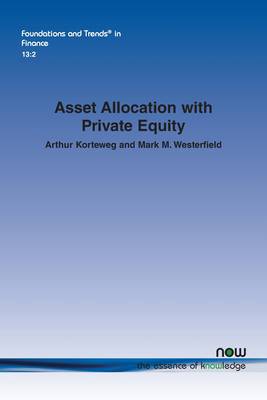
- Retrait gratuit dans votre magasin Club
- 7.000.000 titres dans notre catalogue
- Payer en toute sécurité
- Toujours un magasin près de chez vous
- Retrait gratuit dans votre magasin Club
- 7.000.0000 titres dans notre catalogue
- Payer en toute sécurité
- Toujours un magasin près de chez vous
Description
Asset Allocation with Private Equity addresses the central question "What is the optimal portfolio allocation to private equity?" The authors have two goals. The first is to survey the literature on the private equity partnership arrangement from an investor's perspective. The second is to articulate a list of open questions in the literature. The monograph is organized to lead from a description of theoretical and empirical work toward open questions. To that end, a substantial number of recent and unpublished working papers are included in the monograph. It proceeds as follows: Section 2 contains institutional details regarding PE firms, funds, and investors. For some readers this will be a review, but it is included because the institutional details are required to understand the decision rights that the LP grants the GP and how those decisions are usually executed. There is a discussion of the GP's incentives, which pervades the discussion of selected data and pricing power later in the monograph. To understand why the institutional details of PE matter for LPs, one has to understand the uses and limitations of the benchmark portfolio choice model. To this end, Section 3 reviews a standard portfolio choice model and shows how the characteristics of PE violate the model's core assumptions. Section 4 describes the methods and problems with measuring performance in PE. Section 5 shifts the focus from PE investments to PE investors and examines the returns and pricing power of LPs. Section 6 focuses on LPs' diversification problem and their liquidity management problem, including the role of the secondary market. The authors close with a summary of some recent work in optimal portfolio allocation to PE.
Spécifications
Parties prenantes
- Auteur(s) :
- Editeur:
Contenu
- Nombre de pages :
- 128
- Langue:
- Anglais
- Collection :
Caractéristiques
- EAN:
- 9781680839685
- Date de parution :
- 27-07-22
- Format:
- Livre broché
- Format numérique:
- Trade paperback (VS)
- Dimensions :
- 156 mm x 234 mm
- Poids :
- 190 g

Les avis
Nous publions uniquement les avis qui respectent les conditions requises. Consultez nos conditions pour les avis.






